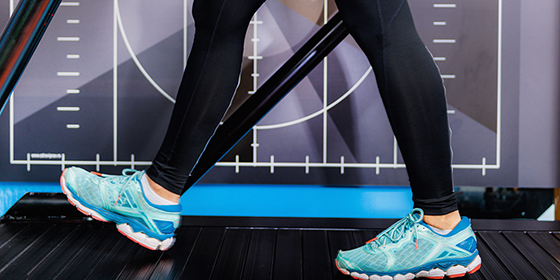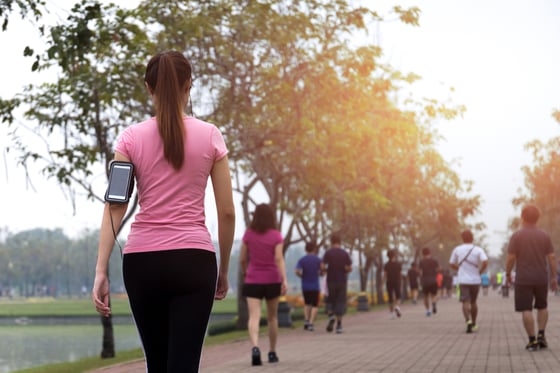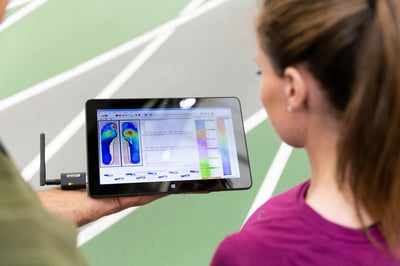
What You Need to Know About the Biomechanics of Walking
For practitioners focused on maximizing human performance, understanding how bodies move—including the biomechanics of walking—is crucial.
No matter who you are—an Olympic athlete, a nurse, a teacher, or anyone between—the way you move matters. Human movement is a fundamental part of daily existence, and the way people walk has a particular impact on quality of life, regardless of one’s body weight, athletic skill or history with injuries. Whether it’s the speed attained on a power walk or the basic comfort experienced while walking the halls at home, an optimal gait has positive impacts on life and health.
Understanding the biomechanics of walking is essential for practitioners focused on optimizing their patients’ movement—from the way that joints slide together and muscles stiffen to the connection between the brain and the leg itself.

What is gait?
In order to optimize the biomechanics of a patient’s walk, you must first understand the science behind it—which is where the study of gait comes into play. Gait, the term applied for the way a person walks or runs, reveals important information about a person’s physical health and movement. Gait shows us the fluidity of one’s motion, the speed and symmetry at which they can move, the heaviness with which their feet hit the ground and the injuries they may be susceptible to. When medical professionals and athletes can fully understand gait (and measure it), it becomes much easier to maximize daily life and athletic performance.
The physical process that forms human gait is complex, and understanding each component is vital when seeking to optimize movement. The biomechanics that form an individual’s walk involves several factors, from their body weight to their tibialis anterior to the amount of time that passes between their steps.
The Biomechanics of Running and Walking
The biomechanics of both walking and running relies on the connection between the mind and body’s anatomy, and those biomechanics can be optimized to work more effectively. Improving gait has the potential to improve any person’s life—elite athlete or not.
When walking—the most foundational piece of movement—your body begins in a stance pose, then swings one leg forward before moving the alternate leg. The biomechanics come into play as the weight-bearing leg leaves the ground and then comes back down. Though it sounds simple, it’s actually quite complex.
The Phases of Gait: Walking
Understanding the phases of walking equips us to measure and analyse those phases in detail, and by optimizing them, we can improve speed and injury prevention. There are two phases involved in walking: the stance phase, where the body initially makes contact with the ground, and the swing phase, where the weight-bearing leg swings forward and back down to the ground. These phases of walking form the gait cycle, and are repeated until the walk is halted.
Walking biomechanics involve many of the lower body’s muscles and bones, from the ankle joint to the Achilles tendon and the calf muscle. By understanding an optimal walking gait and giving close attention to the biomechanics of your patients’ walk, you’ll be equipped to quickly pinpoint issues that are affecting speed or causing injury, such as constriction of the heel or a tight ankle.

How the Body Moves When Walking
Walking biomechanics involve the ankle, calf, knee, quadricep and hip, among others. It’s imperative that all of these body parts work together to perform a comfortable, optimized gait, with each joint and muscle group playing an important role. From the flexibility demanded of the Achilles tendon to the cooperation required of the transverse tarsal joint and subtalar joint, each small piece matters a great deal.
XSENSOR: Technology for measuring walking biomechanics
Regardless of where you and your patients may be—whether speed walking on a track or working in the clinic to achieve modest mobility—the ability to measure and understand the biomechanics of walking is essential for progress. At XSENSOR, our dynamic sensing technology helps you do just this. Our top-of-the-line solutions and technology is built to help medical professionals gather and analyze foundational data that improves both athletic performance and daily life.
Our industry-leading technology helps you to understand your patients’ movement on a new level, using dynamic sensing to measure gait, optimize efficiency and improve performance. Our high resolution plantar pressure sensors deliver smart data from the interaction between the foot and the ground or inside the shoe. XSENSOR’s dynamic sensing technology includes:
- intelligent insole sensors,
- walkway sensors, and
- stance pad sensors.
At XSENSOR, we believe that understanding and measuring the most foundational pieces of movement can change lives. Our dynamic sensing technology equips you with the data and technology to improve both the way people move, and the way that they live.


